Android Hardware Rundown: 2012
2012 was quite a huge year for Android. We saw the jump from Android 4.0 Ice Cream Sandwich to Android 4.1 Jelly Bean, and then to version 4.2. Ice Cream Sandwich was a solid operating system, but Jelly Bean made it even better, adding new features like Google Now, better notifications, and even Photo Sphere. However, the software was merely just a vehicle for the hardware to ride on — the devices themselves were what really shined this year.
It was a huge year for Google, who completely revamped their Nexus lineup, and Samsung released more Galaxy devices than we can count on two hands. We also saw some new devices from HTC, Motorola, LG, Sony, and of course, Amazon and Barnes & Noble. Let's recap all the fun stuff that happened over the past 12 months in the world of Android.
The Nexus line of Android devices from Google saw the biggest change this year. The search giant introduced their first ever tablets, the Nexus 7 and Nexus 10, and also released a successor to last year's Galaxy Nexus, the Nexus 4. The Nexus 7 has already proven to be one of the most popular Android tablets of all time, and the Nexus 10 features the world's highest-resolution display of any mobile device with a whopping 2560x1600 resolution, resulting in 300 PPI.
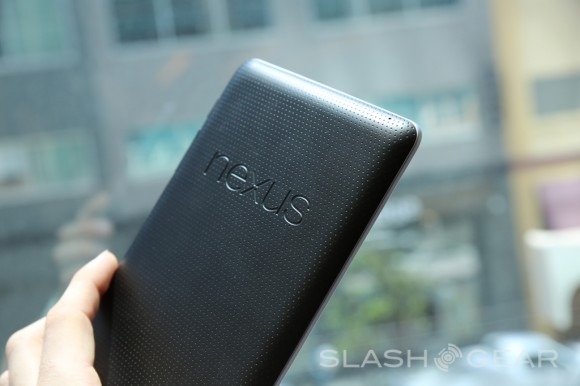
At Google I/O 2012, the company also announced and later released the Nexus Q, a unique home entertainment device that integrates with Google Play and streams media to televisions and speakers from several different devices at once. However, the Nexus Q was eventually discontinued after only a few months due to lack of interest.
Samsung
2012 was also a huge year for Samsung. Their flagship Galaxy S III sold over 30 million units, thanks to its availability on most of the major carriers, including AT&T and T-Mobile. Samsung also released the Galaxy Note, a unique 5-inch, phablet-style handset for those wanting a large screen for increased productivity. They later released the Galaxy Note II with an even larger 5.5-inch display and an enormous battery.
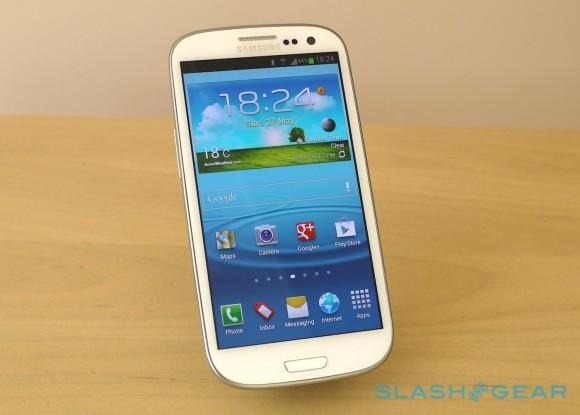
Due to the success of the Galaxy S III, Samsung released the Galaxy S III mini in Europe, a smaller version of the company's popular flagship handset. They also released several other specialty products, such as the projector-equipped Galaxy Beam, the Android-powered point-and-shoot Galaxy Camera, and the iPod Touch-esque Galaxy Player in both 3.6-inch and 4.2-inch flavors.
As far as their tablet business, Samsung didn't make a lot of noise, but they released several solid Android tablets, like the Galaxy Note 10.1, and the Galaxy Tab 2 7.0 and 10.1.
ASUS
Other than partnering with Google to manufacture the Nexus 7, ASUS released a couple more Android tablets of their own, the Transformer Pad TF300 and the Transformer Pad Infinity — both are 10.1-inch tablets running quad-core NVIDIA Tegra 3 quad-core processors with 4-PLUS-1 technology, and both received upgrades to Android 4.1 Jelly Bean. The Transformer Prime, while released towards the end of 2011, didn't make a huge impact until 2012 rolled around, and it was the world's first quad-core processor-toting tablet.
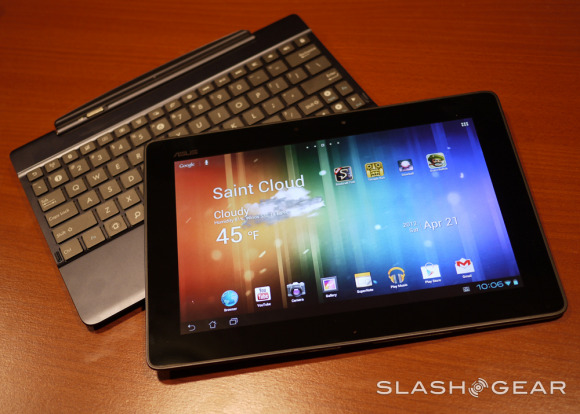
Be sure to check out our official [Tegra Hub] to see the full impact of NVIDIA's Tegra 3 throughout 2012.
Amazon
This year from Amazon, we saw the company improve on their original Kindle Fire tablet by releasing the Kindle Fire HD in two form factors, 7 inches and 8.9 inches. Both are loaded with Android 4.0 Ice Cream Sandwich and Texas Instruments OMAP dual-core chipsets. The biggest upgrades from the original Kindle Fire, however, are the screens, which received a high-definition boost to as large as 1920x1200 on the 8.9-inch model (1280x800 on the 7-inch model).

Barnes & Noble
Barnes & Noble also implemented upgraded versions of their NOOK Tablet in order to compete with Amazon's Kindle Fire HD. Both the NOOK HD and the NOOK HD+ are 7-inch Android-powered tablets and run off of Texas Instrument OMAP dual-core chipsets, with the HD+ running a slightly faster processor, increased storage, and a higher-resolution display of 1920x1280.
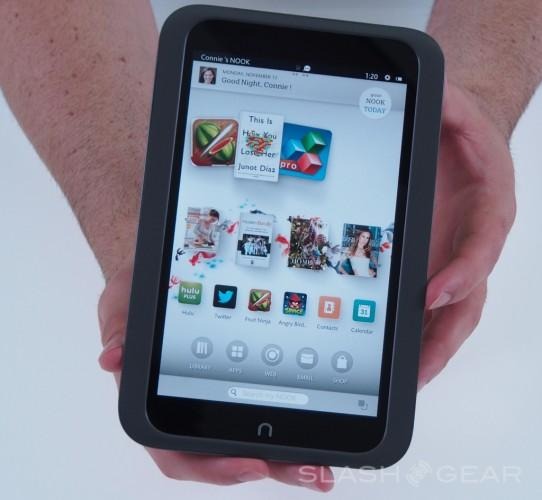
HTC
HTC had a big 2012. They released the DROID DNA, which comes with the first 1080p display in a smartphone and is the densest display in the world currently, with 440 PPI on a 5-inch screen. The company also released a brand new line of smartphones, known as the One series, that includes both top-tier handsets, as well as budget-minded devices. The company released the One S, One V, One X (and its successor, the One X+ — it and the HTC One X international version being the first smartphones in the world to carry the NVIDIA Tegra 3 quad-core SoC), One XL, and the budget-minded One VX, as well as the mid-range One SV that was released in Europe.

Other handsets that HTC released in 2012 include sequels of the company's Incredible and EVO line, the DROID Incredible 4G LTE and EVO 4G LTE, respectively, as well as the Desire C, Desire V, and Desire X — all three of which are budget-friendly devices that sport a lower-clocked processor, less RAM, and a smaller screen.
LG
LG outed several impressive devices this past year. They were the sole manufacturer behind Google's Nexus 4, and while that was one of their most popular devices (and their most important for 2012), they also had a few others that stood out. The Optimus G is one of them, and it's a powerhouse of a smartphone, with a 1.5GHz quad-core Snapdragon S4 Pro chip, 2GB of RAM, and 32GB of internal storage. The company also released some pretty stellar mid-range devices as well. The Spectrum, as well as the Spectrum 2, featured solid specs and performance at a lower price, and the company's latest L-series phone, the Optimus L9, saw a sizable improvement over the L7 and other L-series devices released in 2012, such as the L5 and L3.
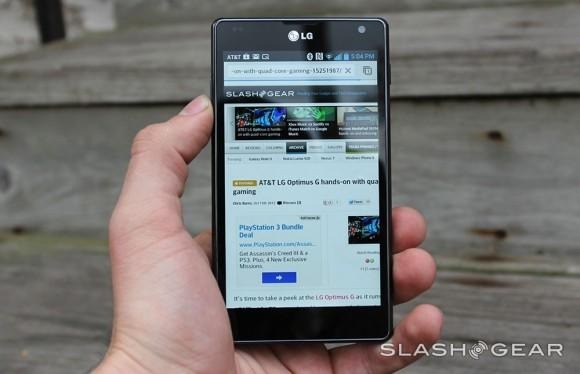
Other LG handsets released in 2012 include the phablet-esque Intuition, which sports a 5-inch display and an odd 4:3 aspect ratio that we're not used to seeing in the mobile market. LG also outed the Lucid, a small budget-minded 4G LTE device that sports a dual-core Qualcomm processor and an impressive IPS LCD display.
Sony
We didn't see a lot from Sony this year, but they did out a few of Xperia-branded smartphones and tablets that kept them in the spotlight throughout the year. The Xperia TL was Sony's first-ever smartphone built upon Qualcomm's Snapdragon S4 chip, and it's the same device featured in the 2012 James Bond film Skyfall.

Other smartphones that we saw this year from Sony included the Xperia ion, Xperia S, and the Xperia U. The Xperia S was launched at CES 2012 and was the company's first Sony-only smartphone after acquiring Ericsson's stake in Sony Ericsson at the beginning of the year. The Xperia ion was also launched at CES 2012, and it features a 4.55-inch display running Qualcomm's last-generation Snapdragon S3 chip.
As far as tablets, Sony outed the Xperia Tablet S and the Tablet P. The Tablet S packs in a NVIDIA Tegra 3 chip and runs off of Android 4.0 Ice Cream Sandwich. The Tablet P, however, is one of Sony's most unique offerings, featuring a clamshell form factor, making it easier to slide in out of a pocket, but it ended up suffering from flimsy build quality, lack of software support, and ultimately lacking a lot of gaming options.
Motorola
Motorola picked up where they left off at the end of 2011. They improved on their DROID RAZR handset by introducing several new versions of the device. The DROID RAZR HD featured a larger, higher-resolution display, while the DROID RAZR MAXX HD included almost-identical specs, but sported a much larger battery for those wanting to go longer without having to plug into a wall.

The company also outed a budget-friendly and smaller DROID RAZR M that featured a 4.3-inch display, but stuffed it into a small form factor for those who still favor the smaller devices of yesteryear. Other notable devices that Motorola released in 2012 include the Atrix HD, DROID 4, and the mid-range and oddly-named MOTOLUXE.
